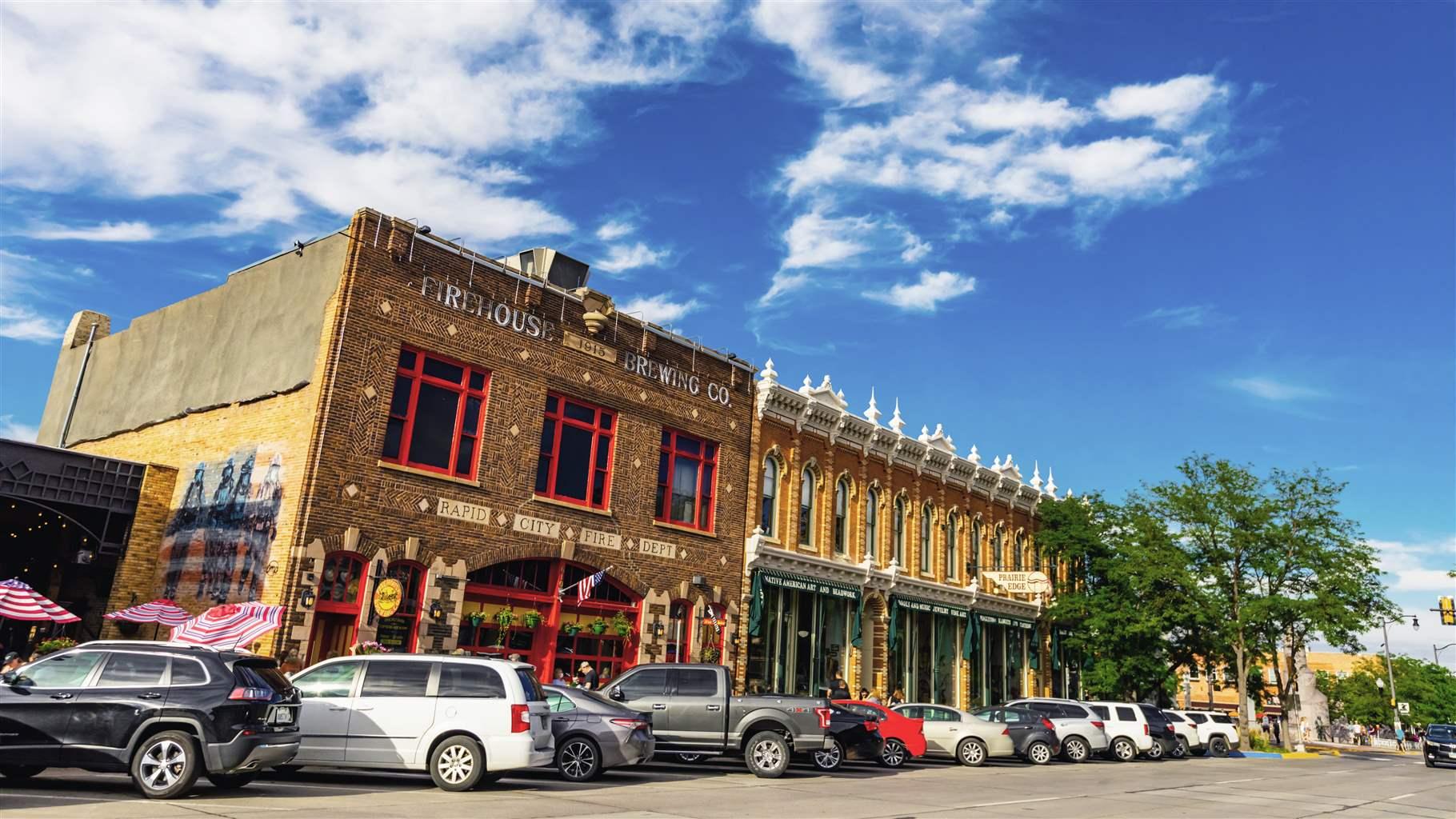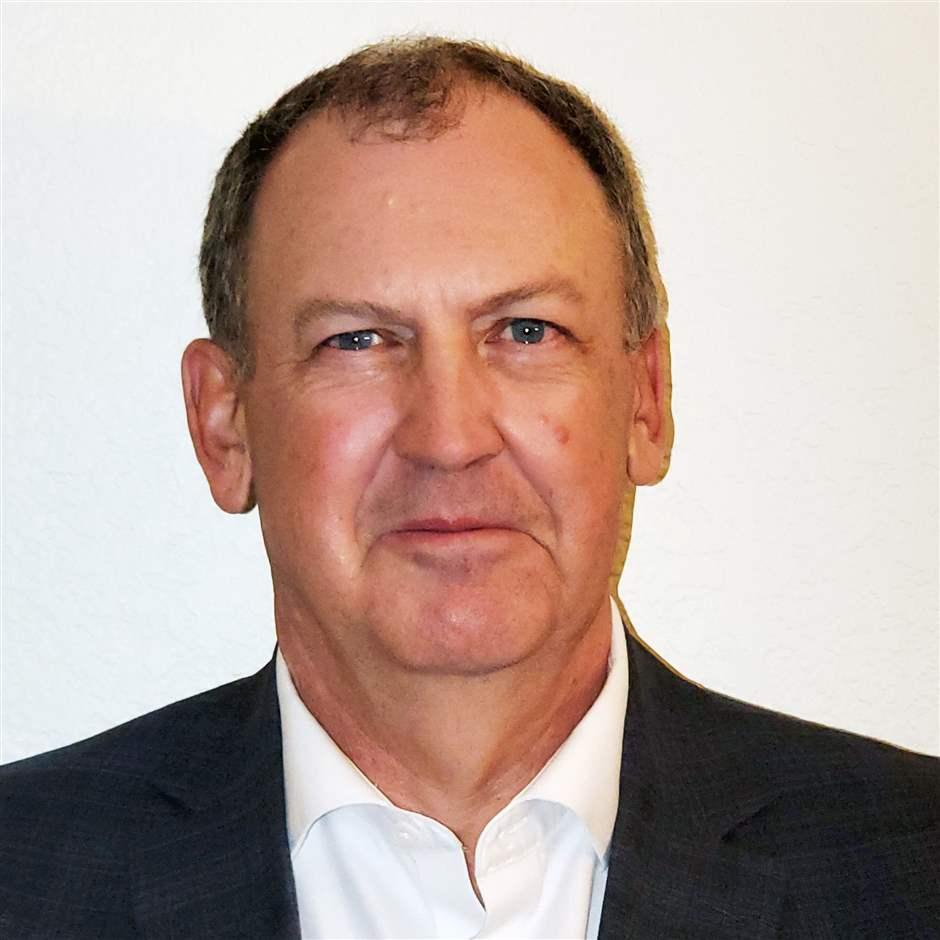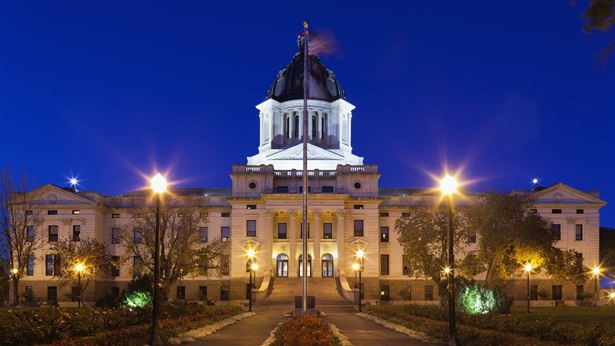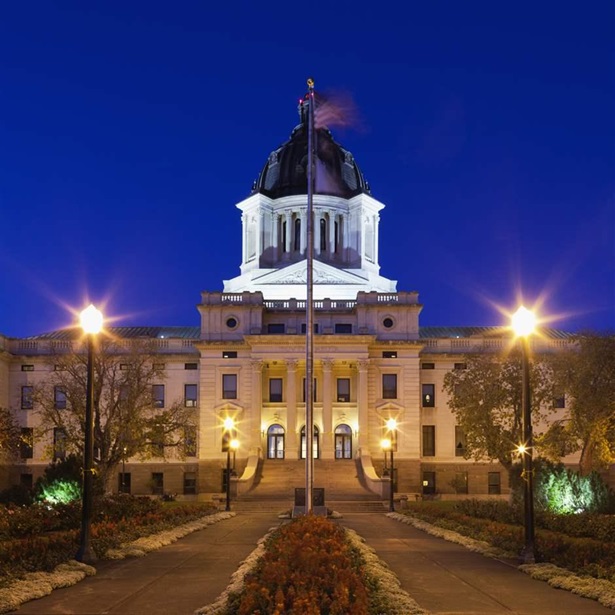Piecing Together Elements of Public Pension Plan Success
Senior actuary for the South Dakota Retirement System discusses the importance of intentionality and transparency in plan design and investing

In fiscal year 2021, state public pension systems had, for the first time in a decade, enough funding to cover 80% of the tab for plan members’ promised benefits. Historic stock market gains in fiscal 2021 are partly to thank for this achievement, but so too is the discipline shown by states and plan administrators, whose commitment over those same 10 years to annually meeting or exceeding contribution targets set the stage for the improved funding levels.
To continue this trend, however, state policymakers must continue to make scheduled contributions, which in turn requires a plan to address future fiscal uncertainty. State pension systems, such as those in Wisconsin, South Dakota, and Tennessee, have maintained high funded ratios at predictable costs over the past 20 years in part because they have strategies—including policies that target debt reduction and share gains and losses with workers and retirees—to mitigate cost increases during economic downturns.
These three states in particular have delivered stability and sustainability through the economic ups and downs of the past 20 years. And although these states’ plans employ different benefit designs, they share several exemplary characteristics, including a path to retirement security for all workers within clearly defined cost targets, a plan for managing risk, and a commitment to ensuring that policies are transparent and clearly communicated to stakeholders.
Pew conducted a series of interviews with representatives from these states to better understand the factors that contribute to their pension systems’ success. In the first of these conversations, Doug Fiddler, senior actuary for the South Dakota Retirement System (SDRS), discussed how his state’s plan is designed to help ensure strong performance.
This interview has been edited for length and clarity.
Q: Can you share a bit of your history with SDRS?
A: I’ve been working with SDRS since 2007, first as a consultant and now an employee. Part of the attraction for me was my observation that all SDRS stakeholders were pulling in the same direction—that they had clearly articulated goals and guardrails and were working together for success. I was also impressed that when I joined there had only been two executive directors and two state investment officers in 40 years. Clearly something was working right at SDRS.
Q: SDRS has been a strong performer for decades. Are there specific cost and retirement security goals that have led to this success?
Before we get to the cost and retirement security goals, we should talk about the South Dakota Investment Council, which oversees the investment decisions for SDRS and a few other South Dakota trust funds. The council’s disciplined processes and low-cost investment management have consistently produced some of the top long-term returns in the country among state plans. Without that, the SDRS’ funded status, which is the share of promised benefits that we have money to pay for, would be quite different.
SDRS understands our responsibilities and limits. We’re charged with sustainably managing the plan on fixed employer contribution rates, a prospect that continues to get more difficult as retirees live longer and future investment returns look likely to be less robust than they’ve been historically. We regularly revisit and assess our goals for delivering adequate benefits to our members, but those can only be pursued within the limits of those fixed employer contributions.
Q: Which plan features are most important for achieving those goals?
A: Since its inception, SDRS has had statutory funding thresholds, which set minimum levels of assets we’re required to hold at all times, and which serve as an alarm and prompt us to act when future funding looks to be at risk. Through the years when investment returns were soaring, our board was very disciplined in when and how we would recommend benefit improvements—always maintaining a substantial margin and always paying for improvements in advance.
In the last decade and a half, we’ve moved more toward variable benefits, primarily cost-of-living adjustments, or COLA, as we recognized the increasing costs of retirees living longer on one hand and a decrease in projected investment returns on the other.
Q: One thing that distinguishes SDRS from most other plans is that you not only offer retirement security to career employees who spend most or all of their working life in public sector jobs, but also seek to provide proportionate lifetime income for shorter-term workers. How did that become a priority?
A: Early on in our history, there was a lot of pressure to improve benefits for shorter-term workers, especially our higher education members who may stay in positions for only a few years. So we added two provisions to address the legitimate criticism that typical defined benefit plans provided inadequate benefits for these shorter-service members.
Q: What are those provisions?
First, our members who choose to have contributions refunded when they leave employment receive their contributions plus a portion of the employer contribution. And second, for our vested members who choose a deferred benefit instead of a refund, we provide COLA increases both during the deferral period—which protect their benefit from being eroded by inflation—and after they start taking their benefits. With these two provisions, we believe we provide an equitable benefit to shorter-term members that avoids the problem of employees potentially harming their retirement readiness by taking their accounts out of the system when they leave.
Q: What about supplemental savings policies?
A: One of our goals is to educate all our members about their retirement options and needs. SDRS and Social Security provide a great foundation, but depending on their vision for their retirement, they’ll likely want to save more. So to help them do that, we maintain and promote a 457(b) plan that employers who elect to participate can offer to their workers.
Q: What’s that?
A: It’s a tax-advantaged deferred compensation plan, and it helps both career and shorter-term members better prepare for retirement. This supplemental retirement plan, or SRP as we call it, also features automatic enrollment and auto-escalation.
Q: How has your plan’s benefit design changed from the original design and intent of the 1970s?
Until the mid-1970s, there were 11 separate plans covering public employees in South Dakota, some with inadequately low benefits and many of them inadequately funded. Those were consolidated into SDRS in 1974, and since then there’ve been two distinct trends in benefit design changes.
First, during the first three-plus decades of SDRS, as system funding improved and excelled, benefit formulas were repeatedly improved to meet the board’s goals for providing adequate benefits for members.
The second trend began around 2008, when the board began to recognize the changing landscape—with rapidly increasing life expectancies and consensus views that future investment returns would be lower than they had been historically. The focus of this second trend has been sustainability. We’ve reduced inequities, including subsidized joint and survivor benefits and early retirement, that were generating losses while benefiting relatively few workers. And we’ve added features, such as a variable COLA, that are more responsive to changing funding circumstances and enhance the plan’s ability to weather changing economic conditions within the constraints of our fixed—and compared to similar plans, very low—contribution rates.
Q: Have those changes informed or been informed by other changes, such as to your funding policies?
Yes, though our fundamental principle of managing a defined benefit plan on fixed, modest employer contributions has not changed. Because SDRS contributions are statutorily fixed, we maintain a fully funded system by adjusting benefits as needed, through the variable COLA. It’s set each year with an eye to both inflation and long-term affordability.
Before the addition of our variable COLA and other benefit features, our funded status varied considerably from year to year. But now, we are better able to keep the plan consistently funded at 100% of promised benefits and at the same time made the funding status more transparent for our members and the public.
With the adoption of the new benefit features for members entering the system after June 30, 2017, we sought to better align the structure of our benefits with our basic funding principles. We designed the new benefit structure with later normal retirement ages and added a supplemental account to provide similarly valuable benefits for both groups of employees at the same cost and using the same low fixed employer contribution rates.
Q: How does the plan communicate with stakeholders about possible future adjustments that may be needed to reach your goals?
A: Our quarterly reporting to the board details the returns we need in order to reach our funding targets and the likelihood of reaching each of those targets—which, in turn, determines if we pay a COLA equal to inflation within our full COLA range (up to 3.5%) or if we have to restrict the maximum COLA so that we remain fully funded.
We also report annually to the Legislature and governor on our progress toward our two funding thresholds. The most important is the 100% statutory level. Falling short of that would indicate that corrective legislation is needed. And after that, the 120% threshold at which point the Legislature could consider improving benefits if other conditions are met.
And we work hard to communicate to all members our progress on the variable COLA structure, the minimum statutory funding thresholds, and the criteria for benefit improvement consideration. Our quarterly updates are open to the public and broadcast on the internet. We also hold frequent employee and retiree meetings that update our members on what to expect. These meetings help prevent surprises for policymakers and members alike.
Q: Our questions so far have focused mostly on the intentionality of the funding and benefit policies. Can you talk about how the state investment board’s structure and decisions demonstrate an intentional, transparent approach in managing assets?
A: For decades, the South Dakota Investment Council has used a strategy for allocating our assets to various investments that is dynamic and adjusts those allocations automatically within pre-approved ranges in response to changing market valuations. This approach results in more frequent and larger adjustments to our investment allocations than any other state, as far as we are aware.
And though the adjustments happen automatically, they are based on a formal process for valuing the various investments, which our investment staff review in a meeting with policymakers, at least once a year. This system has worked as intended and is accepted and supported by members.
Q: The board’s decision to reduce exposure to risky assets could mean that your members missed out on some of the record performance public plans enjoyed in 2021. How do you respond to that?
A: As you note, our exposure to risky investments such as stocks and private equities is near its lowest level historically and has been for about two years now, except for a couple of short periods when brief market turmoil drove prices below our pre-defined thresholds. We constantly evaluate this process, and to date, those evaluations show it has yielded returns that exceed our historical benchmarks. As a result, our members and the public have great confidence in SDIC and its consistent policies.
Our fiscal year 2021 returns, like in most other states, exceeded long-term return assumptions by a large margin, but they have trailed the SDIC benchmark and other funds’ returns because we have lowered investments in equities over the past several years. But this is not unexpected or unprecedented. We expect our allocation strategy to deliver short-run returns that lag other investors when our regular assessments indicate that markets are persistently overpriced. But we also expect our approach to outperform the markets over longer periods. The investment council has done a good job of communicating with members about these expectations and the rationale behind our strategy.














